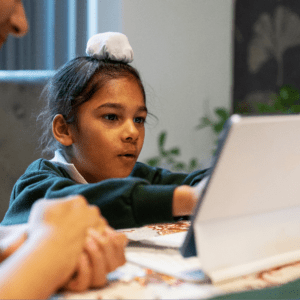Feedback is a cornerstone of effective teaching and learning, serving as a compass guiding students towards improvement. In the educational landscape, feedback is the bridge that connects students’ efforts to their growth, transforming mistakes into learning opportunities. This article explores the significance of providing feedback, the dimensions on which feedback is given, and diverse methods of delivering it. Additionally, it delves into strategies for empowering students to act upon feedback, engaging parents in meaningful conversations about their child’s learning journey.

The Why: Nurturing Growth Through Feedback
Feedback isn’t just about pointing out mistakes; it’s about nurturing growth. Constructive feedback reinforces positive behaviors, offers insights into areas of improvement, and inspires continuous learning. It enhances students’ self-awareness, helps them set goals, and promotes metacognition – the ability to think about one’s own thinking. When students know where they stand and how they can improve, they become active participants in their own learning journey.
The What: Multidimensional Feedback
Feedback spans a spectrum of dimensions, including content knowledge, critical thinking, communication skills, and socioemotional growth. It addresses both the “what” and the “how” of learning, recognizing not only correct answers but also the thought processes and effort students invest in reaching conclusions. Comprehensive feedback acknowledges diverse learning styles, individual strengths, and areas that need development.
The How: Varied Feedback Methods
Teachers employ various methods to deliver feedback, catering to different learning preferences. Written feedback offers a tangible record that students can revisit, fostering deeper understanding. Verbal feedback provides immediate clarification and encouragement. Video-recorded feedback is gaining traction, enabling teachers to offer nuanced explanations and modeling. This method also humanizes the learning process, bridging the gap between teacher and student.
Taking Action: Empowering Students to Act on Feedback
Feedback is only as effective as the actions it prompts. Encouraging students to act on feedback creates a cycle of growth. Teachers can facilitate this by setting achievable goals based on feedback, creating action plans, and providing resources for improvement. Cultivating a growth mindset, where challenges are embraced as opportunities, empowers students to persist and excel.
Involving Parents: Feedback for Meaningful Conversations
Feedback isn’t confined to the classroom – parents are integral partners. Sharing feedback with parents fosters a deeper understanding of their child’s progress. This collaboration opens avenues for meaningful conversations that bridge home and school. By providing insights into students’ strengths and areas of growth, parents can better support their children’s learning journey.
Conclusion
Feedback in education is a powerful tool that empowers students to take ownership of their learning, spurring growth and development. It’s a dialogue that celebrates progress and transforms setbacks into stepping stones. By offering comprehensive feedback, empowering students to act on it, and involving parents in the conversation, educators create an ecosystem where learning flourishes and learners thrive.





